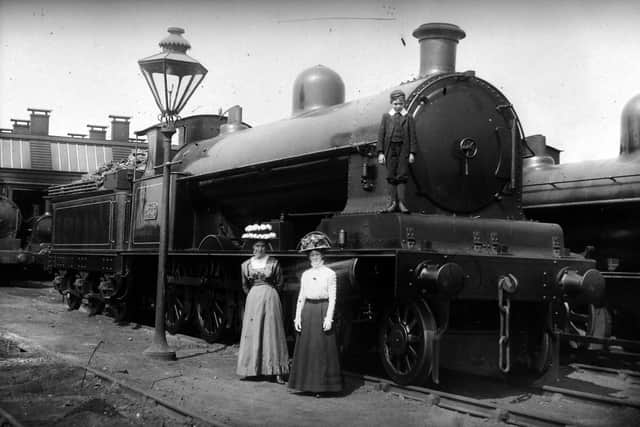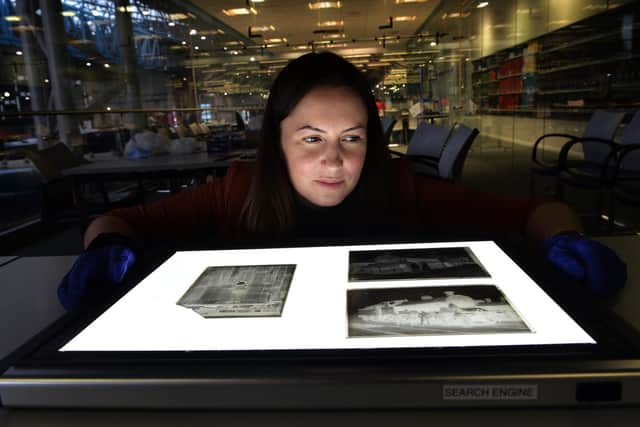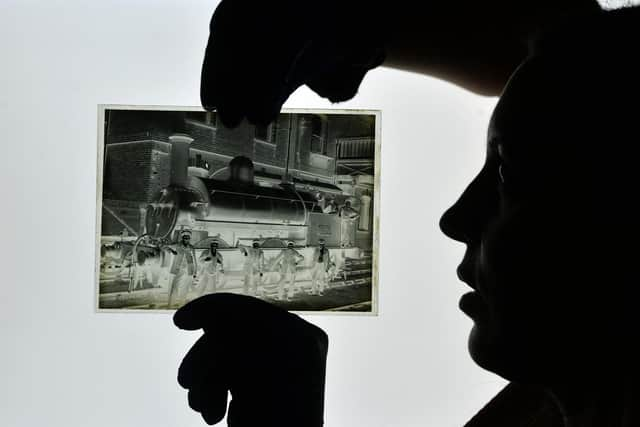Rare photographs found in a wardrobe after 100 years tell of life on the railways in gift to York's National Railway Museum
The unique collection has been gifted to the archives of York’s National Railway Museum, with a haunting insight into the lives of those who lived and worked on the tracks.
From photographs of a little boy in shiny shoes, proudly holding an engine aloft, to those of his sister beside a locomotive, the images bring to life an association that spans across the generations.
Advertisement
Hide AdAdvertisement
Hide Ad“It’s unusual to have such rich stories about the photographs in our collection, about who the people were and what they did," said Alison Kay, archives manager. “It tells us there’s a story behind every photograph.”


George Stainton was an engine fitter and driver for the London and North Western Railway from 1871, with a passion for photography that was unusual for someone of his time and social status.
It was his great-granddaughter Sue Stainton who, after her own father’s death, discovered a box of his old images under lockdown, tucked away in the back of a wardrobe.
It included 21 glass negatives and paper prints, and she was so riveted by the people in the photographs that she began to research their stories.
Advertisement
Hide AdAdvertisement
Hide Ad

What she uncovered was a vivid picture of life on the railways that spanned across five generations, from porter to engine fitter then stoker and driver, and featuring their wives and children too.
Across the generations
It began with her great, great-grandfather, Samuel the elder, a porter at Dudley Port station in July 1856. Then three of his sons, including photographer George, two of his grandchildren and, finally, of her own father’s Samuel ‘Don’ Stainton’s association.
As she delivered the collection to the National Railway Museum, she said the museum held poignant memories for the family, which her father had “adored”.


“It was his cathedral,” she said simply. “He loved trains all his life, but sadly unlike his father, grandfather, and uncle, he wasn’t allowed to drive them.
Advertisement
Hide AdAdvertisement
Hide Ad“I think my great-grandfather would be amazed that his photographs have ended up here, and I know that my father would be very proud indeed.”
Stories
Ms Stainton’s research has drawn life to the black and white images, which were mainly taken at Bescot Junction Works, near Walsall. Many are of steam locomotives, with family members and colleagues pictured in front of them.


One little boy appears time and again. This is Sidney Stainton, the photographer’s youngest son, pictured for the first time around 1902 when he would have been aged three or four.
In one he is clutching a model engine, with a badge on his shoulder that suggests it is near to his birthday. Digging deeper, the family looked at the size of the engine next to the bricks in the picture, concluding he has an ‘O gauge Bing’ working model steam engine, by Gebrüder Bing of Nürnberg.
Advertisement
Hide AdAdvertisement
Hide AdAnother shows two ladies in “fabulous” hats, Sidney’s sister Florence Stainton and Ann Cooper, related to the photographer’s wife Sarah Cooper. This is Miss Kay’s favourite image.
“You can see, standing on the engine behind them, the same little boy,” she said. “It would never be allowed today.”
Rare insight
What is particularly rare about the photographs, she added, is that they were taken by an engine driver, of limited means, in a time when photography equipment was prohibitively expensive.


He lived in a traditional two-up, two-down, research shows, so questions remain as to how he could have developed glass plates when he didn’t even have a bath.
Advertisement
Hide AdAdvertisement
Hide Ad“We’ve got a lot of enthusiasts’ collections in our archives, but usually from people of greater means – they had more money,” said Miss Kay. “This is pretty amazing.”
Archives
The Stainton Collection, as the photographs are known, now joins the vast temperature-controlled archive of 1.75m images that document railway history at York’s National Railway Museum. Alison Kay said that while the museum has to be selective about what it accepts, this collection stood out for the depth of detail it reveals.
“It’s quite a small collection but what’s amazing is the stories, the way the photographs speak,” she said. “It’s discovering them now, and all the stories behind them, that is so mesmerising. There are gems out there, just waiting to be found.”
_________________________________________________________________________
Advertisement
Hide AdAdvertisement
Hide AdSupport The Yorkshire Post and become a subscriber today. Your subscription will help us to continue to bring quality news to the people of Yorkshire. In return, you'll see fewer ads on site, get free access to our app and receive exclusive members-only offers. Click here to subscribe.
